CLAT Exam > CLAT Notes > Additional Study Material for CLAT > National Symbols of India
National Symbols of India | Additional Study Material for CLAT PDF Download
There are some things which are symbolic about India. These national symbols are an instant mark of Indian pride and identity. Let us take a look at them.
1. National Flag- Tiranga
- The national flag is a horizontal rectangular tricolour with equally sized deep saffron at the top, white in the middle and green at the bottom. In the center is a navy blue wheel with twenty-four spokes, known as the Ashoka Chakra.
 Tiranga
Tiranga - The flag is based on the Swaraj flag designed by Pingali Venkayya.
- The present form of the national flag was adopted in the meeting of Constituent Assembly on 22ndof July in 1947.
- The topmost part of the national flag is designed using saffron colour.
(i) Saffron colour indicates courage and selflessness of the nation.
(ii) It is a religiously significant color for religions like Hinduism, Buddhism and Jainism.
(iii) Saffron colour indicates renunciation and absolution of the ego of the people belonging to different religions and unification to become one.
(iv) Saffron colour reminds political leaders to devote themselves towards the nation and perform their duties dedicatedly only for the good of the nation, without seeking any personal benefits. - There is a white stripe in the middle of the flag.
(i) It is representative of honesty, purity and peace.
(ii) In Indian philosophy, white also represents cleanliness and knowledge.
(iii) It signifies light and the path of truth to guide India’s national conduct.
(iv) Politically, the white stripe functions as a reminder to India’s leadership that the ultimate national objective is to maintain a state of peace. - There is a green stripe on the bottom half of the flag.
(i) It represents faith, fertility and prosperity.
(ii) In Indian philosophy it is considered to be a festive and stabilizing color that represents life and happiness.
(iii) It demonstrates the value placed on the earth as the ground upon which all life is dependent.
(iv) In this way the green stripe serves as a reminder to political leaders to protect Indian soil both from external enemies and from internal human destruction. - Navy blue colour, of the Ashok Chakra in the centre of the white strip of the national flag, indicates the most truth of the universe. It represents the color of sky and ocean.
- According to the Hindu religion, all the 24 spokes of the national Flag represents the Life means The Dharma which are as follows: Love, Courage, Patience, Peacefulness, Magnanimity, Goodness, Faithfulness, Gentleness, Selflessness, Self-Control, Self Sacrifice, Truthfulness, Righteousness, Justice, Mercy, Gracefulness, Humility, Empathy, Sympathy, Spiritual Knowledge, Moral Values, Spiritual Wisdom, The Fear of God and Faith (Belief or Hope).
2. National Emblem- Lion Capital of Ashoka
- The emblem of India is an adaptation of the Lion Capital of Ashoka.
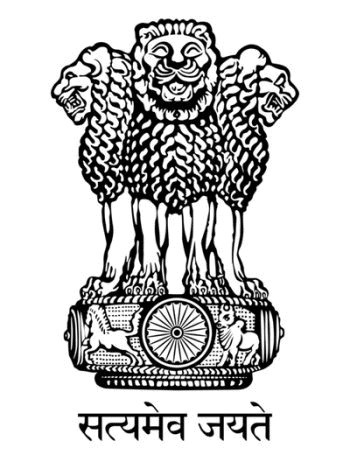
- It was adopted on 26 January 1950, the day that India became a republic.
- In the emblem adopted by Madhav Sawhney in 1950 only three lions are visible, the fourth being hidden from view. The wheel appears in relief in the centre of the abacus, with a bull on the right and a galloping horse on the left, and outlines of Dharma Chakras on the extreme right and left.
- Forming an integral part of the emblem is themotto inscribed below the abacus in Devanagari script: Satyameva Jayate सत्यमेव जयते (English: Truth Alone Triumphs).This is a quote from Mundaka Upanishad,the concluding part of the sacred Hindu
3. National Calendar- Shalivahana Shaka Calendar
- Shaka Calendar is the national calendar of India.
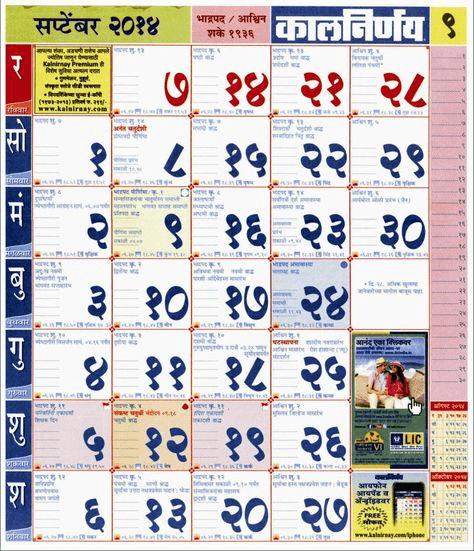 Shaka Calendar
Shaka Calendar - The calendar was introduced fromNepal Sambat by the Calendar Reform Committee in 1957, as part of the Indian Ephemeris and Nautical Almanac, which also contained other astronomical data, as well as timings and formulae for preparing Hindu religious calendars, in an attempt to harmonise this practice.
- Usage started officially at Chaitra 1, 1879, Saka Era, or March 22, 1957.
4. National Anthem- Jana Gana Mana
- Jana Gana Mana is the national anthem of India.
- It was composed by Rabindranath Tagore in 1911.
- The underlying message of Jana Gana Mana is pluralism.
- It was adopted in itsHindi version by the Constituent Assembly as the National Anthem of India on 24 January 1950.
- It was first sung on 27 December 1911 at the Kolkata Session of the Indian National Congress.
- A formal rendition of the national anthem takes fifty-two seconds. A shortened version consisting of the first and last lines (and taking about 20 seconds to play) is also staged occasionally.
5. National Song- Vande Mataram
- Vande Mataram is the national song of India.
- Vande Mataram—literally, “I praise thee, Mother”—is a poem from Bankim Chandra Chattopadhyay’s 1882 novel Anandamath. It was written in Bengali.
- It is a hymn to the Mother Land. It played a vital role in theIndian independence movement, first sung in a political context by Rabindranath Tagore at the 1896 session of the Indian National Congress.
- In 1950 (after India’s independence), the song’s first two verses were given the official status of the “national song” of the Republic of India.
6. National Days- Independence Day, Republic Day, Gandhi Jayanti
- A national day is a day on which celebrations mark the nationhood of a nation or state.
- It may be the date of independence, of becoming a republic, or a significant date for a patron saint or a ruler (such as a birthday, accession, or removal).
- The national day is often a public holiday. Many countries have more than one national day.
- Denmark and the United Kingdom are the only two countries that do not have designated national days.
7. National Pledge
- “India is my country. All Indians are my brothers and sisters. I love my country, and I am proud of its rich and varied heritage. I shall always strive to be worthy of it. I shall give my parents, teachers and all elders respect and treat everyone with courtesy. To my country and all my people, I pledge my devotion. In their well being and prosperity alone lies my happiness.”
- It was composed by Pydimarri Venkata Subba Rao.
8. National Cockade
- A cockade is a knot of ribbons, or other circular- or oval-shaped symbol of distinctive colours which is usually worn on a hat.
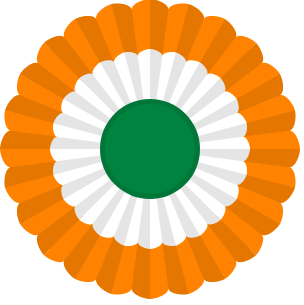 National Cockade
National Cockade - In the 18th and 19th centuries, coloured cockades were used in Europe to show the allegiance of their wearers to some political faction, or to show their rank or to indicate a servant's livery. Because individual armies might wear a variety of differing regimental uniforms, cockades were used as an effective and economical means of national identification.
9. National Flower- Lotus
- Lotus (Nelumbo nucifera) is the national flower of India.
- The symmetrically arranged petals and broad floating impart a sense of serenity and beauty.
10. National Fruit - Mango
- Mango (Mangifera indica) is the national fruit of India.
- Mangoes are native to India.
11. National River - Ganga River
- River Ganga is the national river of India.
- Ganga is revered by Hindus as the most sacred river on Earth.
- Ganga is the longest river of India with a heavily populated river basin.
12. National Tree - Banyan Tree
- Banyan (Ficus bengalensis) is the national tree of India.
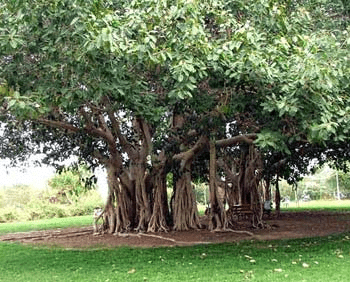 Banyan Tree
Banyan Tree - The tree symbolizes eternal life.
- The country’s unity is symbolized by the tree’s huge structure and its deep roots.
- The tree gives shelter to many different animals and birds. It symbolizes India which is home to a diverse population.
13. National Aquatic Animal - Gangetic Dolphin
- Gangetic dolphin (Planista gangetica) is the national aquatic animal of India.
 Gangetic Dolphin
Gangetic Dolphin - It is said to represent the purity of the holy Ganga river as it can only survive in pure and fresh water.
14. National Animal - Bengal Tiger
- Royal Bengal Tiger (Panthera tigris tigris) is the national animal of India.
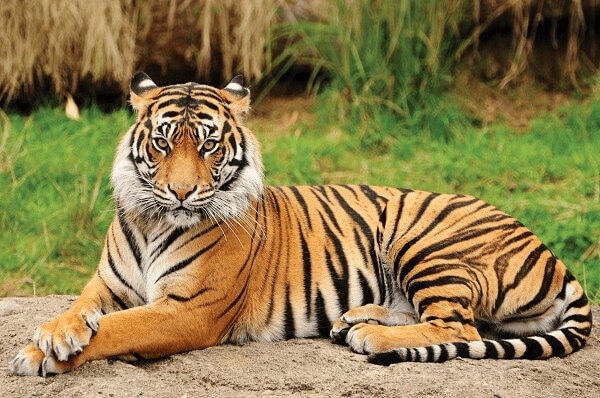 Bengal Tiger
Bengal Tiger - The Royal Bengal Tiger is indigenous to the Indian subcontinent.
- It symbolizes strength, agility and power.
15. National Heritage Animal- Elephant
- Indian elephant is the national heritage animal of India since 22 October 2010.
- India's Environment Ministry has declared the elephant a National Heritage Animal in order to increase protective measures for the country's nearly 29,000 elephants.
- "Declaring it the National Heritage Animal will give it due place as emblem of ecological sensitivity. It will also mark recognition for its centrality in our plural cultures, traditions and oral lore," the task force wrote in its report.
16. National Bird - Peacock
- Indian peacock (Pavo cristatus) is the national bird of India.
- The Indian peacock is indigenous to the Indian subcontinent.
- A peacock is a symbol of grace and beauty.
- The peacock represents the unity of vivid colours.
17. National Reptile- King Cobra
- King cobra is the national reptile of India.
- It is considered a sacred animal in Indian culture.
18. National Currency - Indian Rupee
- Indian Rupee (ISO code: INR) is the official currency of the Republic of India. The issuance of the currency is controlled by the Reserve Bank of India.
- The Indian rupee symbol (
 ) (adopted in 2010) is a combination of the Devanagari letter “र” (ra) and the Latin capital letter “R” without its vertical bar (similar to the R rotunda). The parallel lines at the top (with white space between them) are said to make an allusion to the tricolour Indian flag and also depict an equality sign that symbolises the nation’s desire to reduce economic disparity. It was designed by Udaya Kumar Dharmalingam, at the Industrial Design Centre at the Indian Institute of Technology Bombay.
) (adopted in 2010) is a combination of the Devanagari letter “र” (ra) and the Latin capital letter “R” without its vertical bar (similar to the R rotunda). The parallel lines at the top (with white space between them) are said to make an allusion to the tricolour Indian flag and also depict an equality sign that symbolises the nation’s desire to reduce economic disparity. It was designed by Udaya Kumar Dharmalingam, at the Industrial Design Centre at the Indian Institute of Technology Bombay.
19. National Sport - Hockey
- Hockey is the national sport of India.
The document National Symbols of India | Additional Study Material for CLAT is a part of the CLAT Course Additional Study Material for CLAT.
All you need of CLAT at this link: CLAT
|
1 videos|19 docs|124 tests
|
FAQs on National Symbols of India - Additional Study Material for CLAT
| 1. What are the national symbols of India? |  |
Ans. The national symbols of India include the national flag (Tiranga), the national emblem (Lion Capital of Ashoka), the national anthem (Jana Gana Mana), the national song (Vande Mataram), and the national animal (Bengal Tiger).
| 2. What does the national flag of India represent? |  |
Ans. The national flag of India represents the country's pride, sovereignty, and national identity. The saffron color symbolizes courage and sacrifice, the white color symbolizes peace and truth, and the green color symbolizes fertility, growth, and auspiciousness. The Ashoka Chakra in the center of the flag represents the wheel of law and signifies righteousness.
| 3. Who composed the national anthem of India? |  |
Ans. The national anthem of India, "Jana Gana Mana," was composed by Rabindranath Tagore. It was adopted as the national anthem on January 24, 1950, and is written in Bengali. The anthem celebrates the diversity and unity of India.
| 4. What is the significance of the national animal of India? |  |
Ans. The national animal of India is the Bengal Tiger. It holds immense significance as it represents power, strength, agility, and grace. The Bengal Tiger is also a symbol of India's rich wildlife heritage and the need for its conservation.
| 5. Why is the national emblem of India significant? |  |
Ans. The national emblem of India, the Lion Capital of Ashoka, is significant as it represents the country's ancient history and the principles of dharma (righteousness) preached by Emperor Ashoka. The emblem features four Asiatic lions standing back to back, symbolizing power, courage, pride, and confidence. The Ashoka Chakra in the emblem represents the eternal wheel of law.
Related Searches
















